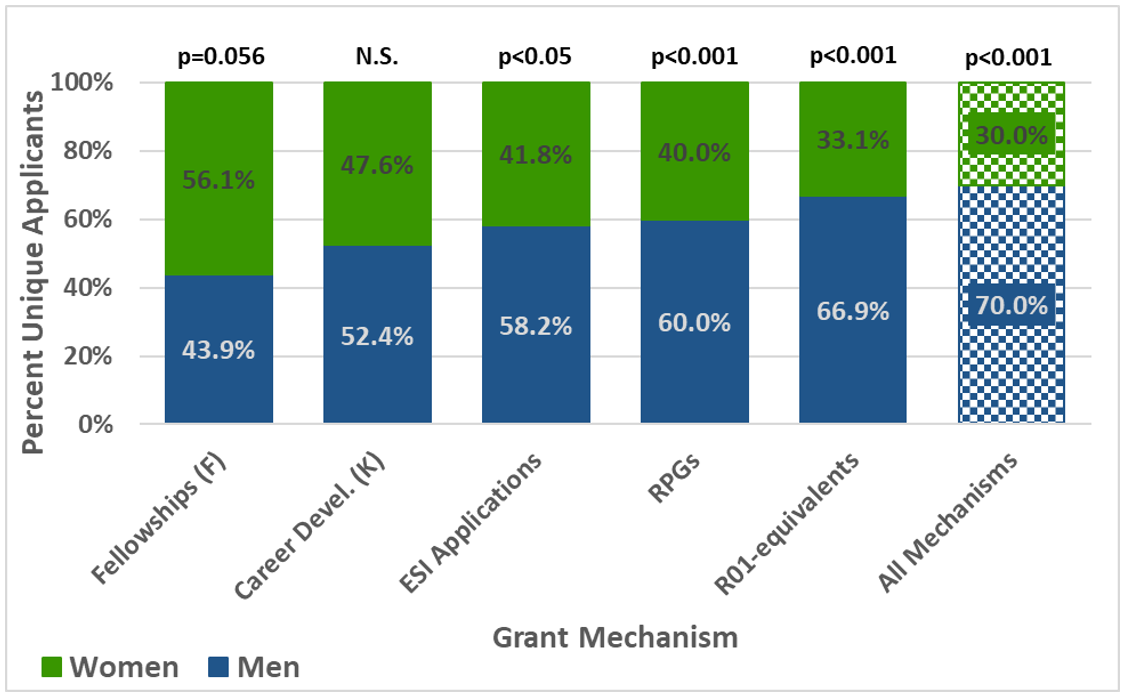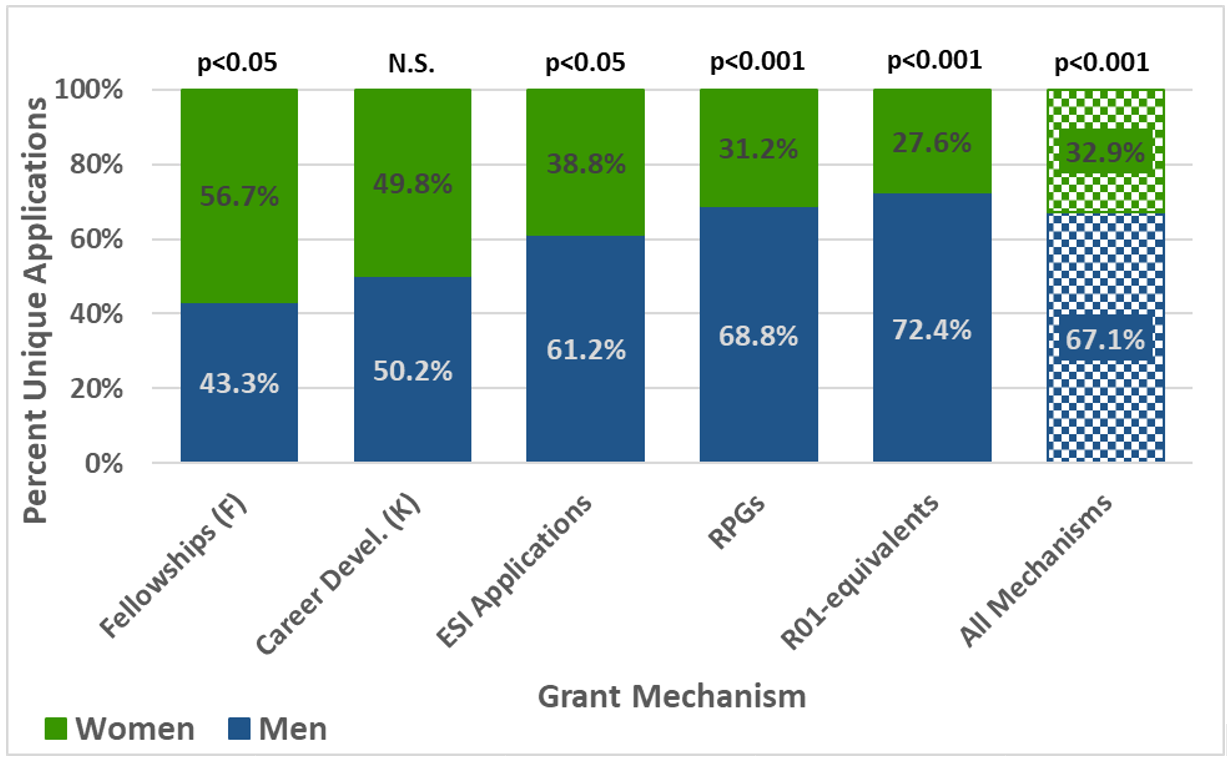Gender Demographics of NIDCR’s Extramural Community
NIH’s ability to help ensure that the nation remains a global leader in scientific discovery and innovation depends upon a pool of highly talented scientists who help to further NIH's mission. Scientists and trainees from diverse backgrounds and life experiences bring different perspectives, creativity, and individual enterprise to address complex scientific problems. Below, we provide data on the gender demographics of NIDCR’s extramural community.
Early in the research career (represented here by Individual Fellowship (F), Career Development (K) applicants) there are similar numbers of male and female applicants (Figure 1). At the transition to an independent research career (represented here by Early Stage Investigator (ESI) applicants) there are more male than female applicants (Figure 1). Later in the research career (represented here by Research Project Grants (RPGs) and R01-equivalent applicants) the difference between the number of male and female applicants becomes even greater (Figure 1). Because women are underrepresented among established oral health researchers, there are fewer submitted grant applications from women as compared to men (Figure 2).
However, once grant applications are submitted, those from women are funded at the same rate as those from men. NIH uses award rates (very similar to success rates) as a metric for describing the likelihood of a project getting funded. There was no difference in award rate between Fellowship applications, Career Development applications, RPG applications or R01-equivalent applications submitted by men and women. Women had a significantly higher award rate for ESI applications compared to men.
In summary, there is a striking difference in women’s representation between the earlier career ‘training’ stage and the later career ‘independent researcher’ stage. Thoughtful intervention during key transitions – such as between the ‘training’ and ‘independent researcher’ stage – could help reduce the differences.
Additional Information
For information on NIH please see: PMID: 31378126, PMID: 30012615, PMID: 29920223, PMID: 31633016, NIH Data Book, and NIH Office of Scientific Workforce Diversity. For more general information on the science and engineering workforce please see the National Science Foundation’s Survey of Earned Doctorates and Science & Engineering Indicators surveys.
October 2024



